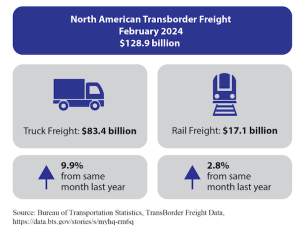At a press briefing marking the release of a report titled Great Expectations: Railroads and U.S. Economic Recovery, Hamberger said that while freight railroads have been able to weather the economic downturn, they stand to face even more difficult times.
'Freight rail is the only mode of transportation that is almost entirely self sustaining,' Hamberger said, noting that as the recession continued through 2009, freight railroads invested approximately $9 billion upgrading and modernizing the nation's rail network. 'We sustain a healthy national rail system with private capital and we also deliver tremendous public, economic and job benefits to American businesses and consumers.'
According to the AAR report, freight railroads generate nearly $265 billion in total annual economic activity, and directly or indirectly support more than 1.2 million U.S. jobs. Every one freight rail job supports another 4.5 jobs elsewhere in the economy, the report said.
Additionally, country's privately owned freight railroads provide the literal foundation for the Obama Administration's vision for high-speed and intercity passenger rail. Today, more than 90 percent of Amtrak's operation moves on track rights-of-way owned by freight railroads; with the exception of a few express rail lines, the federal government's plan for high-speed rail envisions sharing track with freight.
'Railroads face new policy initiatives that could hamper our ability to meet the great expectations America now has for rail to aid in our economic recovery,' Hamberger said. 'Select legislative and regulatory proposals are creating an air of uncertainty at a time when there is already too much of that. When so much is riding on freight rail's ability to sustain a healthy national rail network necessary to help America through to economic recovery, now is not the time to undermine our financial viability.'
Hamberger pointed out that costly federal mandates and regulations could have a direct and negative impact on businesses and consumers in the form of higher costs for goods and services.
'What's more, policies that weaken the industry's ability to attract investors could threaten high-paying American jobs with freight rail companies, as well as those jobs connected to the railroads in areas such as housing, manufacturing, retail and agribusiness,' he added.
Great Expectations: Railroads and U.S. Economic Recovery is an AAR analysis report that examines the freight railroad industry's contribution to the U.S. economy, and includes statistical data on the industry's progress throughout the economic downturn. It also provides an analysis of key policy initiatives in Washington, their potential impact on the industry, and possible solutions.







